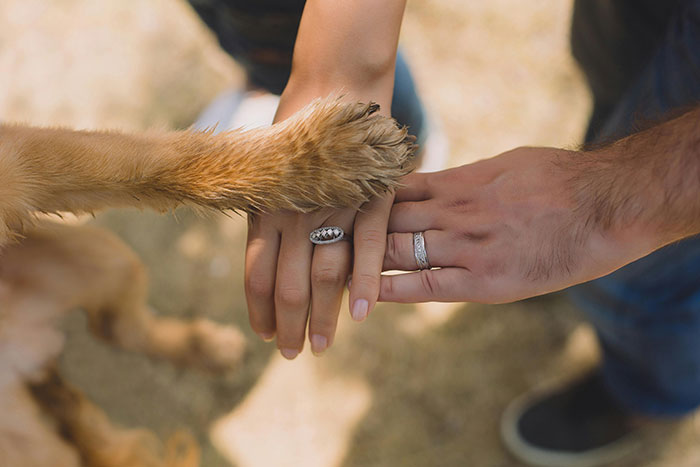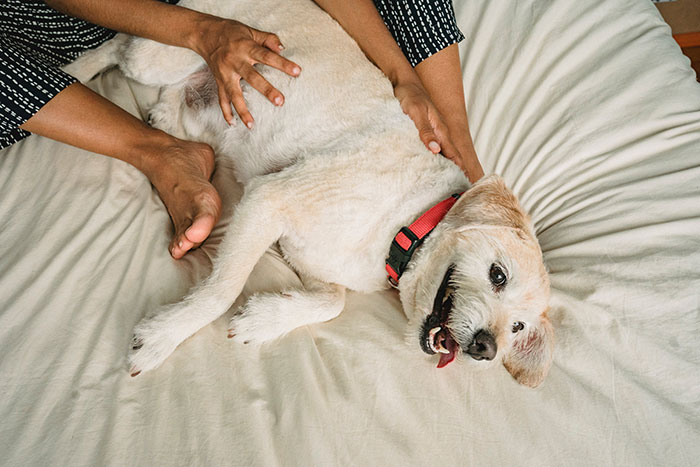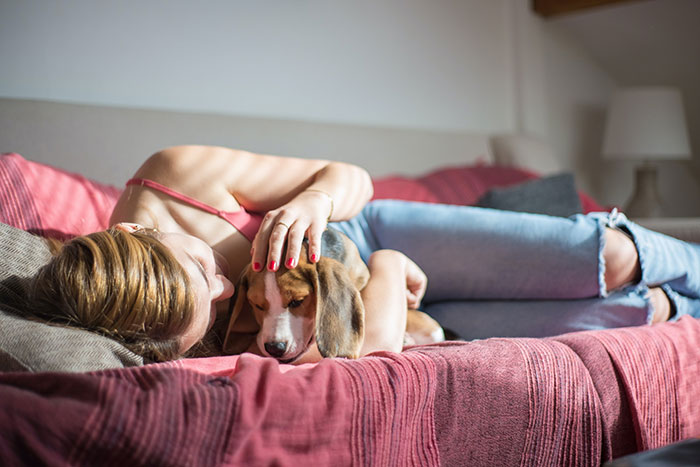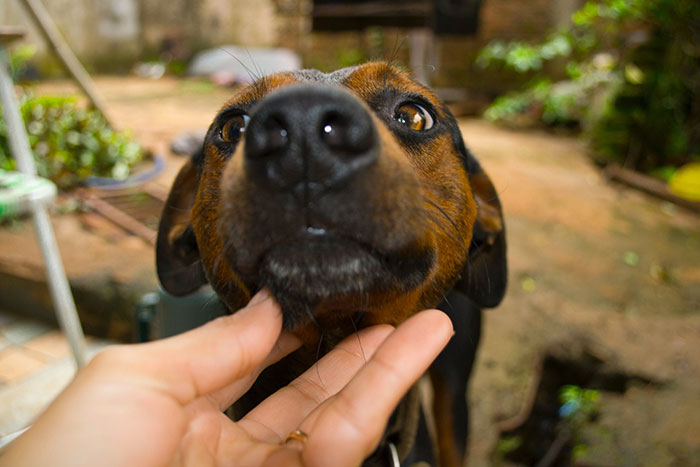
How Much Attention Do Dogs Need: Signs You Need To Spend More Time
As dog owners, we want to ensure our furry friends are happy, healthy, and receiving the attention they need. But how much attention do dogs need? The answer to the above question varies because it depends on multiple factors such as breed, age, and individual personality. However, there are signs you can look out for that indicate your dog may require more attention from you.
- Puppies require 3-4 hours of interaction daily.
- Adult dogs need at least 2 hours of social interaction per day.
- Signs of neglect: clinginess, barking, and destructive behavior.
In this article, we will explore the importance of giving your dog the right amount of attention and provide strategies to ensure they receive the time and stimulation they require. We’ll also look at the signs that indicate your dog may need more attention and how to address any deficits they may be experiencing.
The information provided herein is for informational purposes only. Please refer to our disclaimer for more details..
Understanding Canine Social Needs
Image credit: Anastasiya Lobanovskaya
In this section, we’ll delve into the importance of understanding your dog’s social needs and how it plays a crucial role in determining the amount of attention they require. Here we’ll see how different dog breeds vary in social needs, how socialization impacts attention-seeking, and how stimulation is vital for their overall wellbeing.
Dog Breeds and Their Social Needs
It’s essential to note that different dog breeds have varying social needs. For example, some breeds are content spending more time alone for instance Grey hound and Chow Chow, while others require more attention and interaction like Australian Shepherds and Labradors. Understanding your dog’s breed-specific social needs is vital for ensuring they are receiving the right amount of attention and stimulation.
Dogs Are Social Animals and Attention-Seeking
Dogs are social animals that crave attention and companionship. They seek interaction not only with humans but with other dogs as well. Failure to provide adequate socialization and spend quality time with your dog can lead to behavioral problems such as excessive barking or destructive behavior. As responsible pet owners, we must prioritize providing our dogs with regular socialization opportunities to keep them happy and healthy.
How much attention do Puppies need?
Image credit: Samson Katt
Puppies need more attention compared to adult dogs, during the first 2 to 3 weeks when they haven’t opened their eyes, they need to be supervised for most of the time. In the later stages, after 3 weeks till 6 months they should be given ample time for socialization, obedience training and mental stimulation by engaging in play activities. Puppies sleep for about 18 to 20 hours a day, the time they are awake they spend playing, feeding and exploring.
Puppies need at least three to four hours of interaction in total with the family members of the household. If there are other pets or siblings the puppy does not get bored otherwise they may start to engage in destructive behavior like chewing objects and barking.
How much affection do dogs need?
As discussed earlier, dogs are social animals that crave companionship owing to their social nature and years of domestication. Normally dogs sleep for around 12 to 14 hours a day. When they are awake, they need to socially bond with their human companions. This social need is fulfilled by the affection of human owners. Humans should engage with their furry friends on a daily basis by playing games like fetch toys, going for a 30 minute walk and cuddling on the couch.
Signs Your Dog Needs More Attention
Image credit: Kampus Production
As dog owners, we want to ensure that our furry friends are happy and healthy. However, sometimes we may unintentionally neglect their need for attention, leading to an attention deficit in dogs. It’s crucial to recognize the signs that indicate your dog may be feeling neglected and requires more attention.
Given below are some of the signs that signals that your dog needs more of your time:
- Increased clinginess: If your dog is spending more time by your side and being more affectionate than usual, it may be a sign they need more attention.
- Excessive barking: Dogs that are feeling neglected may bark more frequently, especially when left alone.
- Destructive behavior: Your dog may be acting out by chewing furniture, digging holes, or destroying household items if they’re not receiving enough attention.
- Decreased appetite: Dogs that are feeling anxious or stressed may have a decrease in appetite.
Additionally, consider the amount of time your dog spends alone each day. While all dogs have different needs, a general rule is that dogs should not be left alone for more than 8 hours a day. If you’re unsure whether your dog is getting enough attention, observe their behavior and make adjustments as necessary.
How much interaction does a dog need a day?
Dogs crave attention and therefore need at least two hours of dedicated social interaction per day, depending on factors like age, breed, and health. This includes playtime with pet parent, exercise, training, feeding and socialization.
Regular and quality time spent with their owners contributes to a dog’s mental stimulation, physical health, and overall well-being. It’s important to observe individual needs and adjust the level of interaction accordingly. Consistency, routine, and attention to a dog’s behavior are key to ensuring a happy and healthy pet.
Strategies for Meeting Your Dog’s Attention Needs
Image credit: Paola Roxanna Nemek
Meeting your dog’s attention needs is crucial for their happiness and overall well-being. It’s essential to provide mental stimulation, playtime, and alone time to ensure your furry friend is content and occupied.
Enrichment Activities
Enrichment activities are designed to mentally stimulate your dog and provide entertainment. These activities can range from interactive toys to treat puzzles and even DIY games. Engaging your dog in enrichment activities can help reduce boredom and destructive behavior.
Tip: Try hiding treats around the house and encouraging your dog to find them. This game is a great way to utilize your dog’s sense of smell and keep them entertained for hours.
Mental Stimulation
Mental stimulation involves engaging your dog’s brain in games and activities. This can include training exercises, obedience classes, and even agility courses. Providing mental stimulation helps keep your dog’s mind active and can increase their overall happiness.
1. Teach your dog new tricks using positive reinforcement techniques.
2. Play hide-and-seek with your dog.
3. Set up an obstacle course in your backyard.
Playtime
Playtime is an important aspect of meeting your dog’s attention needs. It allows them to expend energy, engage in physical activity, and bond with their human companions. Playing with your dog can also help reduce stress and anxiety, consider the use of interactive toys like Frisbees and balls.
Consider a Dog Sitter or Doggy Daycare
If you know you won’t have enough time to give your dog the attention they need, consider hiring a pet sitter or taking them to a doggy daycare. This way, they can still get the social interaction and stimulation they crave, even when you can’t be there.
Alone Time
While it’s important to provide your dog with attention and stimulation, it’s also crucial to allow them alone time. This can help prevent separation anxiety and allows your dog to relax and recharge.
- Provide your dog with a comfortable and safe space to retreat to, such as a crate or designated area of the house.
- Leave your dog with toys and puzzles to occupy themselves.
- Gradually increase the amount of alone time your dog has to help build their independence.
By implementing these strategies, you can ensure your dog’s attention needs are met and they are happy and content. Remember to provide a balance of enrichment activities, mental stimulation, playtime, and alone time to keep your furry friend occupied and engaged.
Addressing Separation Anxiety
Separation anxiety is a common issue among dogs left alone for extended periods. If your dog shows signs of distress when you leave, such as whining or destructive behavior, it may be experiencing separation anxiety.
There are several strategies you can use to ease your dog’s separation anxiety, such as gradually increasing the amount of time they spend alone and providing them with mental and physical stimulation before you leave. Training your dog by gradually increasing the alone time and creating positive association using toys and treats can help dogs feel comfortable alone when you are not home. You can always consult a canine behaviorist or a professional trainer to address this issue.
Conclusion
Understanding how much attention dogs need is essential for ensuring their overall well-being. Being social animals, dogs love attention more than anything and therefore they require regular interaction with their human companions.
It’s important to note the signs that indicate they’re feeling neglected include: increased clinginess, reduced appetite and destructive behavior. In order to address these behavioral issues, pet parents are advised to schedule their work to spend ample time with their beloved dogs to maintain their mental and social wellbeing.
Pet owners should consider doggy care centers if they are away from their dogs for more than 8 hours a day when the dog is awake. Lastly, by training the dog and gradually increasing the alone time can help prevent separation anxiety in dogs. As dog owners it is our responsibility to be mindful about the social needs of our canine companion to raise a well balanced, mentally healthy and happy dog.
1Kviews
Share on Facebook
















2
0